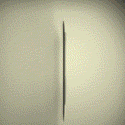
Chicago has always had a taste for history, and this week, it’s serving up something delicious. The Chicago History Museum will host a special screening of Candy Capital, a WTTW Chicago Stories episode celebrating the Windy City’s once-thriving candy empire and the immigrant ingenuity that fueled it.
By the mid-20th century, Chicago wasn’t just the Second City, it was also the sweetest city. What began in the modest kitchens of European immigrants grew into an industry that produced more than 556 million pounds of candy a year by 1940. The city had all the right ingredients: a skilled, diverse workforce, central transportation routes, and, surprisingly, the perfect climate for chocolate making before refrigeration.
“Chicago becomes this mecca for people that have some candy-making skills, some chocolate-making skills,” said Beth Kimmerle, author of Candy: The Sweet History, in Chicago Stories. “You know how to make dragées from Italy, nougat from France, hard candy from England — it’s all reflected in the candy. The copper pot becomes the melting pot of candy.”
From crunchy and chewy to sticky and chocolatey, Chicago’s confectioners gave the world some of its most iconic treats — and built brands that still line shelves today.
Ferrara Candy

Founded by Italian immigrant Salvatore Ferrara in Little Italy, Ferrara began as a bakery selling sugar-coated almonds, or “confetti.” In 1932, the company introduced Red Hots, its first branded hit, and later perfected panned candies like Lemonheads, Jaw Busters, and Atomic Fireballs.
Now part of the Ferrero Group, Ferrara continues to produce favorites like Trolli, Laffy Taffy, and Nerds — proof that Chicago’s sweet legacy endures.
Wrigley’s Gum

In 1891, William Wrigley Jr. came to Chicago with $32 and a knack for sales. What started as a soap business evolved into a gum empire when customers preferred the freebies. He created Juicy Fruit, Spearmint, and Double Mint, revolutionizing marketing with bold visuals and the mantra, “Tell ’em quick, and tell ’em often.”
By 1935, Wrigley’s gum made up 60 percent of all gum sold in the U.S. His name became synonymous with the skyline — and with the Chicago Cubs.
Brach’s

Emil Brach opened Brach’s Palace of Sweets in 1904 with just $1,000. Obsessed with efficiency, he invented one of the first candy-wrapping machines, transforming the industry. By the 1920s, his factory on Kinzie Avenue was churning out millions of pounds of candy each week.
Though its original plant is gone — famously blown up on film in The Dark Knight — Brach’s Candy Corn and caramels remain a Halloween staple, now under Ferrara’s ownership.
Curtiss Candy Company

Founded by Otto Schnering in 1916, Curtiss gave the world Baby Ruth and Butterfinger. Whether Baby Ruth was named for Grover Cleveland’s daughter or a clever dodge of Babe Ruth royalties, the name stuck. Schnering’s legendary marketing stunts — including parachuting candy bars from airplanes — made Curtiss a national sensation.
Mars

Few candy stories rival the drama of Frank and Forrest Mars, the father-son duo behind Milky Way, Snickers, and later, M&M’s. After a family split, Forrest took the candy-coating idea he saw in Europe and partnered with Hershey’s William Murrie — the “M” and “M” — to create a chocolate that “melts in your mouth, not in your hand.”
Frango Mints

Though born in Seattle, Frangos found fame at Marshall Field’s in Chicago, where they became the ultimate symbol of local luxury. Sold exclusively at Field’s, the mint truffles were as much a keepsake as a confection. Now under Garrett Popcorn’s care, Frangos remain a sweet Chicago icon.
Tootsie Rolls
Invented in Brooklyn in 1896, Tootsie Rolls found their permanent home in Chicago in 1968. At its massive plant near Midway Airport, Tootsie Roll Industries produces millions of Tootsie Pops, Dots, and Junior Mints daily — still overseen by Ellen Rubin Gordon, one of the first women to lead a company traded on the NYSE.
And yes — the official word is still that “the world may never know” how many licks it takes.
From Lemonheads to Double Mint, from Baby Ruth to Frangos, Chicago’s candy past remains one of its sweetest legacies.
WTTW’s Candy Capital brings that story to life with rare footage, expert interviews, and plenty of nostalgia. The screening at the Chicago History Museum promises not just a taste of history — but a reminder that Chicago will always be America’s true candy town.
The museum is open Tuesday through Saturday, 9:30 a.m. to 4:30 p.m., and on Sundays, 12 p.m. to 5 p.m.
ALSO READ:
Harrison Ford’s Chicago roots come full circle


















